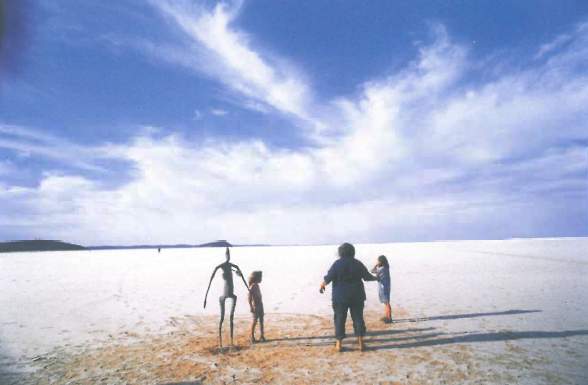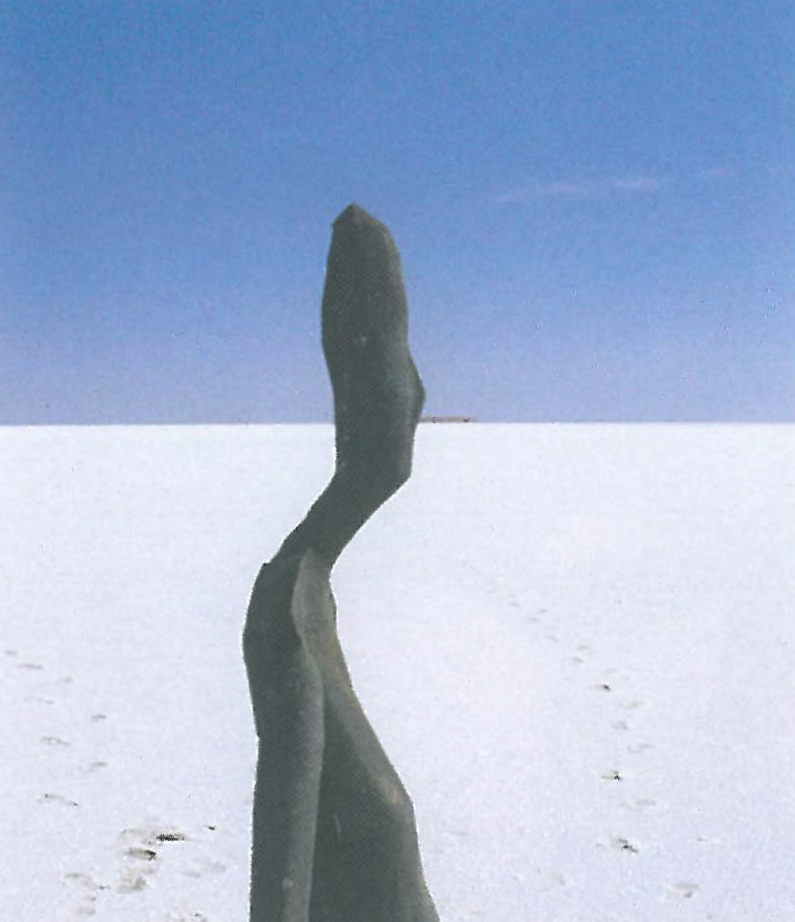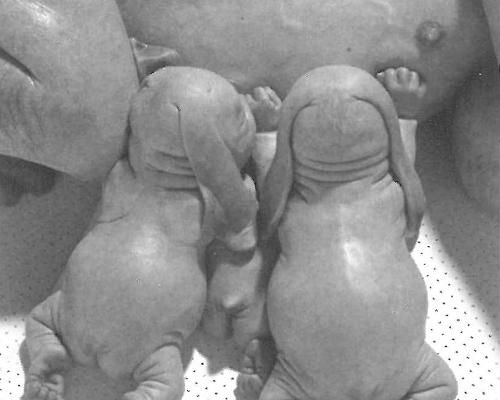
Inside Australia is the latest project by acclaimed British artist, Anthony Gormley. Commissioned for the fiftieth anniversary Perth International Arts Festival, the work comprises fifty cast steel figures installed over fifteen square kilometres of Lake Ballard, a desert salt pan several hundred kilometres north-east of Perth. The work continues Gormley's exploration into the incongruous placement of body forms in the environment, explored through numerous public art projects, most famously the monumental Angel of the North in Gateshead, Tyne and Wear in the UK.
The figures comprising Inside Australia are derived from digital body scans of residents of the closest town to the site, Menzies, produced utilising American military technology. Gormley manipulated the scans, transforming each body into what he terms an 'Insider' - a stick-figure form the same height as its original body, but only two-thirds its mass, accentuating the subtleties of posture built up over years of inhabiting a body.
I met Gormley in Perth a day after the official opening of the work.
AN: Your work is often described as 'uncanny', a quality I've always attributed to the remote Western Australian landscape. Is Inside Australia an uncanny work?
AG: I think I know what you're getting at and I think you're right - unheimlich really means, 'not capable of being made into a home'. I think that is what's so wonderful about the Australian landscape - it resists domestication. It resists human consciousness almost.

AN: And you're happy with how the work occupies that space?
AG: Yes. I think its really quite a difficult work, quite problematic. People arrive at the site and say 'Where's the work?' And it isn't really there, it's lost in space, and so will you be as you venture out into the salt. And I think it gets better and better the further out you go.
s
AN: Your recent works, including Inside Australia, have signified a shift from a relatively literal rendering of the body to a body that seems to be imploding inwards (with the Insiders), or exploding apart (in works like Quantum and Rhizome). Does this reflect any broad cultural shift for our bodies?
AG: I have no idea. It's not a reflection of the atomisation of society - the loss of certainty, the rise of anxiety... I think that with the Insiders there's an enormous call to empathy, and also an enormous difficultly with empathising with them. They seem to have suffered and therefore they demand a kind of projection. They're found objects really - everybody's got an Insider inside them but they've never been shown them before. With the Quantum pieces I start describing the body as a kind of process, a system - it's very difficult to project feeling. Whereas I think that with the Insiders it IS possible. I didn't realise at first how sort of terminal the work was, in the sense that I no longer provided people with body forms that were reassuring locations for feelings.
AN: Given that the Insiders represent a distortion of the proportions of the scanned body, do you feel any moral responsibility in producing the work? In altering someone else's body so drastically?
AG: Well I think the difference between this and a eugenics experiment is that what I'm trying to do is make the familiar strange, and in a way provide an overarching category that breaches difference, while at the same time acknowledging it. So if you like, most eugenics experiments have to do with implicit racist attitudes - you're looking for a typography or a typology of racial features you're trying to systematise. It's very like the Angel of the North as a project - is it possible to use similar methods of visual language for totally different purposes and in doing so, undo some of the harm that those processes and techniques did in the past? The Angel of the North was an attempt to detach the monumental from the totalitarian... and with this I think the body scanner was used not as a tool for the description of difference, but as the basis for a commonality. You asked if there was a moral responsibility in using other people's bodies? Well, obviously I think there is... it's very, very interesting to work out exactly how it is done. In making everybody strange, I think what I'm trying to do is re-present the human being as a thing of unique difference.












